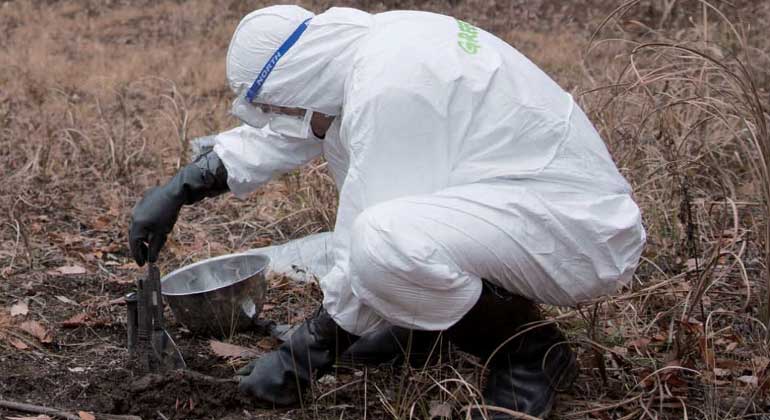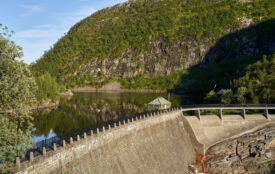High radiation risks in Fukushima village as government prepares to lift evacuation order – Greenpeace
The Japanese government will soon lift evacuation orders for 6,000 citizens of iitate village in Fukushima prefecture where radiation levels in nearby forests are comparable to the current levels within the Chernobyl 30km exclusion zone – an area that more than 30 years after the accident remains formally closed to habitation. Seventy-five percent of Iitate is contaminated forested mountains.
A recent Greenpeace Japan led survey team found radiation dose rates at houses in the village of Iitate well above long-term government targets, with annual and lifetime exposure levels posing a long-term risk to citizens who may return. Evacuation orders will be lifted for Iitate no later than 31 March 2017, to be followed one year later by the termination of compensation payments.
“The relatively high radiation values, both inside and outside houses, show an unacceptable radiation risk for citizens if they were to return to Iitate. For citizens returning to their irradiated homes they are at risk of receiving radiation equivalent to one chest X-ray every week. This is not normal or acceptable,” said Ai Kashiwagi, energy campaigner with Greenpeace Japan [1].
As Japan nears the six years from beginning of the nuclear disaster, the Japanese government last week confirmed that it has not yet conducted any assessments of lifetime exposure risks for citizens if they were to return to Iitate.
The Greenpeace Japan survey results are based on thousands of real-time scanning measurements, including of houses spread over the Iitate region. This data was then used to calculate a weighted average around the houses, which were then computed to give annual exposure rates and over a lifetime of 70 years, taking into account radioactive isotope decay. The survey work also included soil sampling with analysis in an independent laboratory in Tokyo, the measurement of radiation hot spots and the recovery of personal dose badges that had been installed in two houses in February 2016.
For lifetime exposure due to external cesium radiation exposure, the dose range has been calculated, at between 39 mSv and 183 mSv, depending on either 8 or 12 hours per day spent outdoors, for citizens living at the houses over a 70 year period beginning in March 2017 [2]. Among the thousands of points Greenpeace Japan measured for each house, nearly all the radiation readings showed that the levels were far higher than the government’s long term decontamination target of 0.23µSv/h, which would give a dose of 1 mSv/yr.
The weighted average levels measured outside the house of Iitate citizen Toru Anzai was 0.7µSv/h, which would equal 2.5 mSv per year; even more concerning in addition, was the dose badges inside the house showed values in the range between 5.1 to 10.4mSv per year raising questions over the reliability of government estimates [3].
These levels far exceed the 1 mSv annual maximum limit recommended by the International Commission on Radiological Protection (ICRP) [4] , yet the decontamination program is being declared complete for the area that will have its evacuation order lifted next month.
“The government is not basing its policies on science or in the interest of protecting public health. It has failed to provide estimates of lifetime exposure rates for Iitate’s citizens, nor considered how re-contamination from forests will pose a threat for decades to come,” said Jan Vande Putte, radiation specialist with Greenpeace Belgium.
“The Abe government is attempting to create a false reality that six years after the start of the Fukushima Daiichi accident life is returning to normal. In the real world of today, and for decades to come, there is and will be nothing normal about the emergency radiological situation in Iitate,” said Vande Putte.
Greenpeace is demanding that the Japanese government provide full financial support to survivors, so that they are not forced to return for economic reasons. It must take measures to reduce radiation exposure to the absolute minimum to protect public health and allow citizens to decide whether to return or relocate free from duress and financial coercion.
- Greenpeace has launched a public petition in solidarity in defense of human rights of Fukushima survivors.
- The report can be accessed here: “No Return to Normal”









